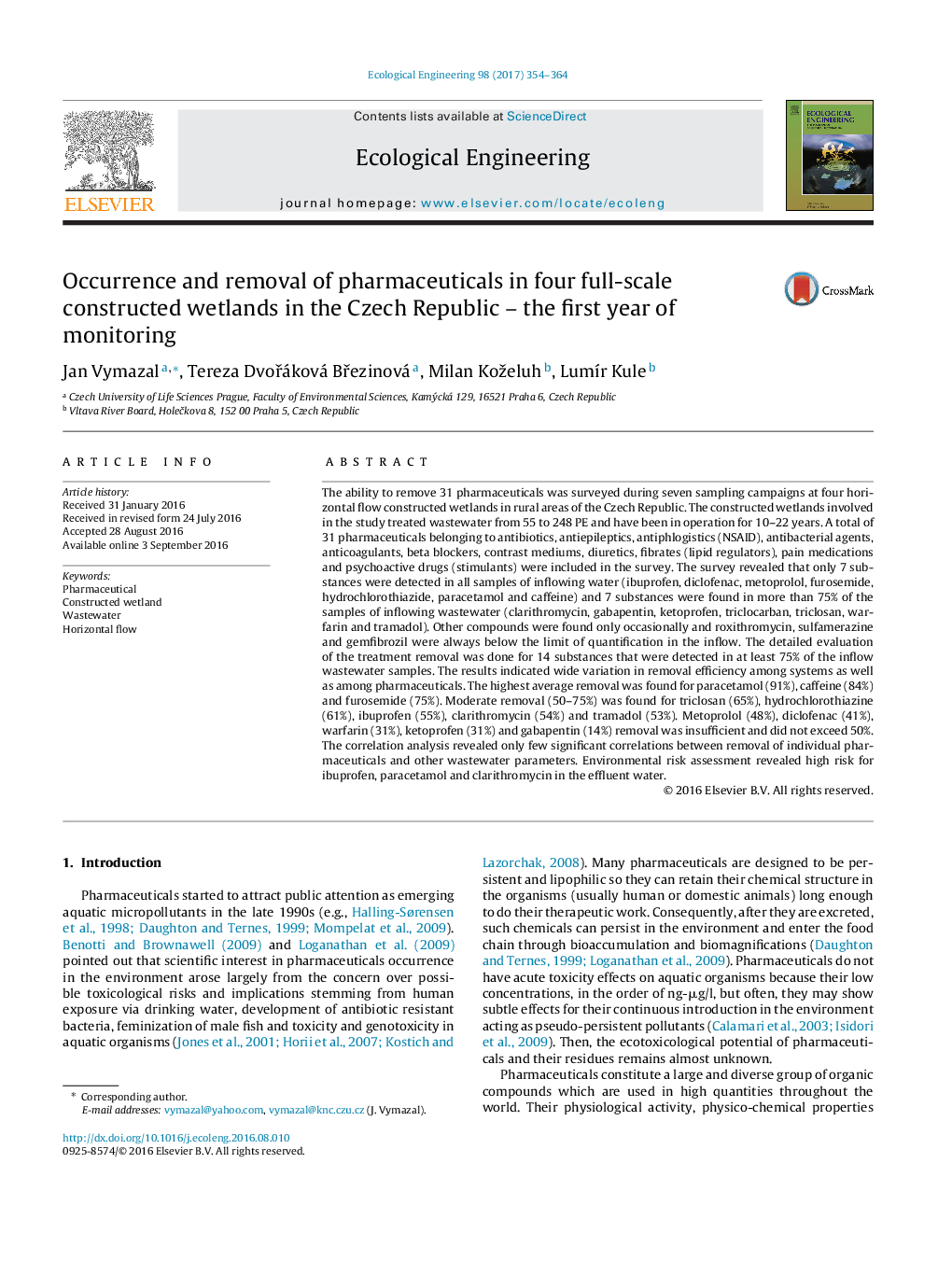| Article ID | Journal | Published Year | Pages | File Type |
|---|---|---|---|---|
| 5744037 | Ecological Engineering | 2017 | 11 Pages |
â¢Four rural constructed wetlands were surveyed for removal of pharmaceuticals.â¢Seven out of 31 pharmaceuticals were detected in all inflow samples.â¢The highest inflow concentrations were observed for paracetamol and furosemide.â¢The highest removal was observed to paracetamol, caffeine and furosemide.â¢The lowest removal was observed for gabapentin, ketoprofen and warfarin.
The ability to remove 31 pharmaceuticals was surveyed during seven sampling campaigns at four horizontal flow constructed wetlands in rural areas of the Czech Republic. The constructed wetlands involved in the study treated wastewater from 55 to 248 PE and have been in operation for 10-22 years. A total of 31 pharmaceuticals belonging to antibiotics, antiepileptics, antiphlogistics (NSAID), antibacterial agents, anticoagulants, beta blockers, contrast mediums, diuretics, fibrates (lipid regulators), pain medications and psychoactive drugs (stimulants) were included in the survey. The survey revealed that only 7 substances were detected in all samples of inflowing water (ibuprofen, diclofenac, metoprolol, furosemide, hydrochlorothiazide, paracetamol and caffeine) and 7 substances were found in more than 75% of the samples of inflowing wastewater (clarithromycin, gabapentin, ketoprofen, triclocarban, triclosan, warfarin and tramadol). Other compounds were found only occasionally and roxithromycin, sulfamerazine and gemfibrozil were always below the limit of quantification in the inflow. The detailed evaluation of the treatment removal was done for 14 substances that were detected in at least 75% of the inflow wastewater samples. The results indicated wide variation in removal efficiency among systems as well as among pharmaceuticals. The highest average removal was found for paracetamol (91%), caffeine (84%) and furosemide (75%). Moderate removal (50-75%) was found for triclosan (65%), hydrochlorothiazine (61%), ibuprofen (55%), clarithromycin (54%) and tramadol (53%). Metoprolol (48%), diclofenac (41%), warfarin (31%), ketoprofen (31%) and gabapentin (14%) removal was insufficient and did not exceed 50%. The correlation analysis revealed only few significant correlations between removal of individual pharmaceuticals and other wastewater parameters. Environmental risk assessment revealed high risk for ibuprofen, paracetamol and clarithromycin in the effluent water.
